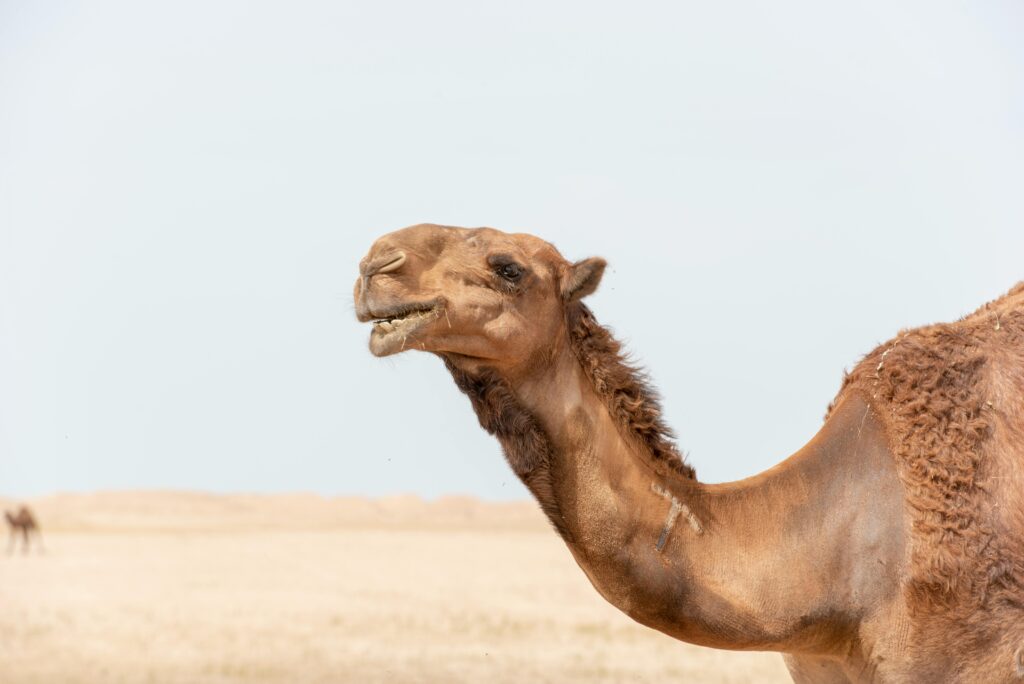When we think of the desert, one of the first creatures that comes to mind is the camel. Often referred to as the “ship of the desert,” camels have played an essential role in the lives of people who inhabit arid and semi-arid regions. But beyond their iconic status, camels are fascinating animals that have evolved remarkable adaptations to survive in some of the harshest environments on Earth. In this article, we’ll explore the natural history, adaptations, and importance of camels in human civilization.
A Brief Overview of Camels
There are two main species of camels: the dromedary (or Arabian camel), which has a single hump, and the Bactrian camel, which has two humps. Dromedaries are more widespread and can be found in North Africa, the Middle East, and parts of South Asia, while Bactrians are primarily found in Central Asia and Mongolia. Both species are known for their incredible ability to withstand extreme temperatures, prolonged periods without water, and difficult terrain, making them invaluable to people in desert regions.
Unique Adaptations to Desert Life
The camel’s ability to survive in the harsh conditions of the desert is a result of millions of years of evolutionary adaptations. Some of the most fascinating features include:
- Humps: Perhaps the most iconic feature of a camel, their humps are often misunderstood as water storage. In fact, a camel’s hump stores fat, not water. This fat can be metabolized into water and energy when food is scarce, enabling camels to survive without access to food for long periods. This adaptation is especially crucial in desert environments where food sources can be sparse.
- Water Conservation: Camels are masters of water conservation. Their kidneys and intestines are specially adapted to minimize water loss. Camels can drink up to 40 gallons of water in one go when rehydrating, but they also have the ability to go for several days without water if necessary. Additionally, camels can tolerate a body temperature fluctuation of up to 6°C (11°F), which helps prevent excessive sweating during the heat of the day.
- Thick Coat: Camels have a thick coat of fur that serves multiple purposes. It protects them from the harsh rays of the sun during the day while also insulating them from the cold at night. Interestingly, camels shed their coats during the hottest months to further reduce heat retention, providing them with natural air conditioning.
- Long Legs and Large Feet: Camels have long, sturdy legs that help them navigate through sand without sinking. Their feet are also uniquely adapted with wide, padded soles that act like snowshoes, allowing them to travel across the desert with ease without getting bogged down in the sand.
- Nasal Passages: A camel’s nose is designed to keep out the dry, dusty air of the desert. Its large, complex nasal passages filter out sand and retain moisture, ensuring that the camel stays hydrated even in the harshest conditions.
- Thick Eyelashes and Long Eyelids: The camel’s eyes are another example of its desert survival strategies. Their long eyelashes protect their eyes from blowing sand and intense sunlight. The camels also have a third, translucent eyelid that helps protect their eyes from dirt while still allowing them to see.
The Camel’s Role in Human Civilization
Throughout history, camels have been integral to the survival and success of human societies in desert regions. They have been used for transportation, as pack animals, and as a source of food and milk. Their ability to travel long distances in extreme heat made them ideal companions for traders in the ancient world, particularly along the famous Silk Road, where camel caravans carried goods between Asia, the Middle East, and Europe.
In addition to their role in trade, camels have also provided vital sustenance to desert populations. Camel milk is highly nutritious, rich in protein, vitamins, and minerals. It is especially important in regions where other sources of nutrition are scarce. In some cultures, camel meat is also consumed, though it is less common than milk.
Conservation and Future of the Camel
While camels are well-adapted to desert life, they are not immune to the threats posed by climate change and human activity. As global temperatures rise and desertification spreads, the habitats of camels could be at risk. Additionally, the domestication of camels has led to their reliance on human care in some regions, and their wild counterparts are endangered in certain parts of the world.
Efforts to conserve camels and their natural habitats are essential to ensuring that future generations can continue to benefit from these incredible animals. In some countries, initiatives are underway to protect wild camel populations and improve the conditions for domesticated camels.
Conclusion
The camel is not just an animal of the desert; it is a symbol of resilience and adaptation. Its unique abilities to conserve water, withstand extreme temperatures, and travel across harsh landscapes have allowed it to thrive in environments where few other creatures can survive. Beyond its survival skills, the camel has also been an essential part of human history, aiding in trade, providing sustenance, and helping shape the cultures of desert-dwelling peoples.
As we face a rapidly changing climate and the challenges it brings, the camel remains a reminder of nature’s ingenuity and the delicate balance between humans and the environment. Understanding and appreciating these magnificent creatures is more important now than ever before.



